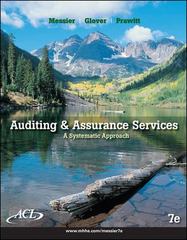Question
E2-6 (Assumptions, Principles, and Constraint) Presented below are the assumptions, principles, and constraint used in this chapter. 1. Economic entity assumption 2. Going concern assumption
E2-6 (Assumptions, Principles, and Constraint) Presented below are the assumptions, principles, and constraint used in this chapter.
1. Economic entity assumption 2. Going concern assumption 3. Monetary unit assumption 4. Periodicity assumption 5. Measurement principle (historical cost) 6. Measurement principle (fair value) 7. Expense recognition principle 8. Full disclosure principle 9. Cost constraint 10. Revenue recognition principle
Instructions Identify by number the accounting assumption, principle, or constraint that describes each situation below. Do not use a number more than once. (a) Allocates expenses to revenues in the proper period. (b) Indicates that fair value changes subsequent to purchase are not recorded in the accounts. (Do not use revenue recognition principle.) (c) Ensures that all relevant financial information is reported. (d) Rationale why plant assets are not reported at liquidation value. (Do not use historical cost principle.) (e) Indicates that personal and business record keeping should be separately maintained. (f) Separates financial information into time periods for reporting purposes. (g) Assumes that the dollar is the measuring stick used to report on financial performance.
Step by Step Solution
There are 3 Steps involved in it
Step: 1

Get Instant Access to Expert-Tailored Solutions
See step-by-step solutions with expert insights and AI powered tools for academic success
Step: 2

Step: 3

Ace Your Homework with AI
Get the answers you need in no time with our AI-driven, step-by-step assistance
Get Started


